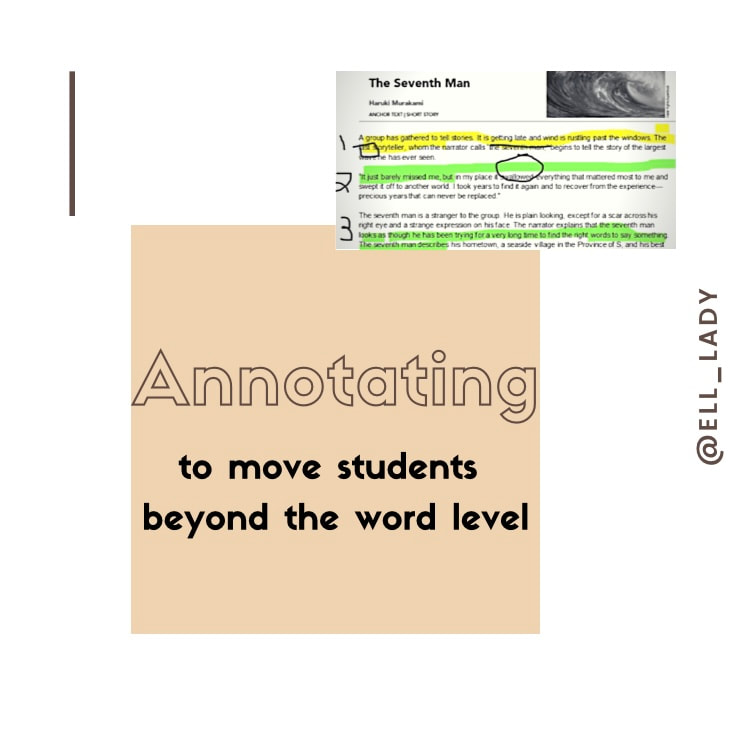|
Tonight, I got to talk to fellow (and now former) high school newcomer teacher Esther Park about annotating texts with her multilingual learners. I knew I wanted annotating to be a strategy to focus on for my mini-series about moving students beyond the word level because it is just such a rich strategy to use that can be a foundation for getting students to SWRL (speak, write, read, and listen). And to top it off, it gets students moving from the word to the discourse level, therefore aiding in the development of English language.
I knew it had to be with Esther since I really felt like she spoke my language with the high school newcomer thing. Also, she has a great digital annotation tool on her Teachers Pay Teachers so that was a definite must for having a conversation around her annotation process. If you are a fellow high school teacher too, check out my membership for high school teachers here! Here are some of our key takeaways: 1. Take baby steps. I am guilty of wanting to do all of the things all of the time. For each task I have my students do, I want to make sure that we are practicing everything that we can which can be extremely overwhelming for students, especially newcomers. I have to tell myself to scale it back a little. Stand-by, overachieving self! Esther helped remind me to calm it down a little and take baby steps. We talked about how she might have them do one annotation focus at a time and build on them as time goes by. She might start off with having students put a heart by something that they loved and leaving it at that until the next annotating task where another layer can be added on. 2. Give your language and questioning a focus. It's not effective to just tell students to circle words they don't know and highlight the ones they recognize. Give it a focus and do that with your questioning. For example, if you are looking for the setting of the text, have students circle or highlight the words that show the setting of the story. Ask them questions like, "What words demonstrate the setting of the story?" Connect it back to the standard or objective to give your questioning a purpose. Esther also talked about using different levels of questions. This reminded me of Costa's questions, which is an AVID technique. I may have students make their own questions and tell them to use one level 1 question, one level 2, and one level 3. If they are newcomers, I may skip the level 3s temporarily. 3. Get students SWRLing and moving to discourse with the appropriate scaffolds. As your students complete some of the annotation tasks, have them share with partners with sentence frames and sentence starters. If students need more scaffolding, give them frames. If they are more advanced proficiency students, give them starters or stems and let them fill in the rest. This can be done for speaking or writing. I hope you enjoyed our conversation around annotating texts with our students. What are some successful tips for annotating that you can share in the comments? To learn more about strategies for incorporating language into your lessons, check out my course, My EL Mentor: Creating a Language-Rich Classroom!
0 Comments
Leave a Reply. |
AuthorI support middle and high school teachers through monthly lesson plans, coaching, and guest speaker offerings in our Secondary ESL Teacher Membership. Archives
April 2023
Categories
All
|


 RSS Feed
RSS Feed
